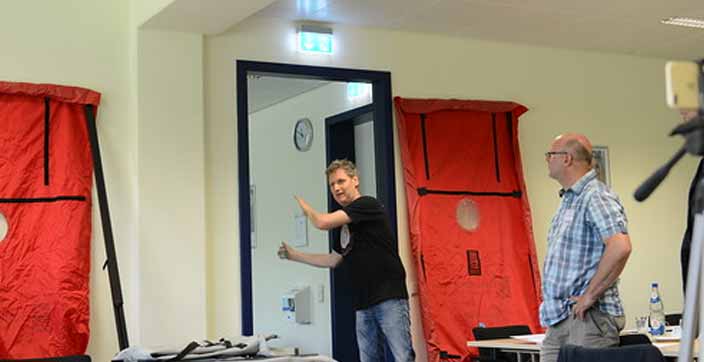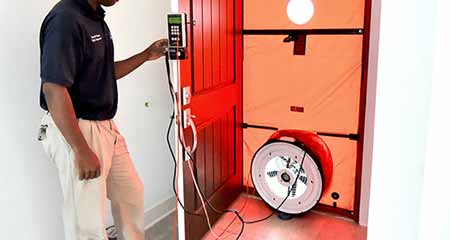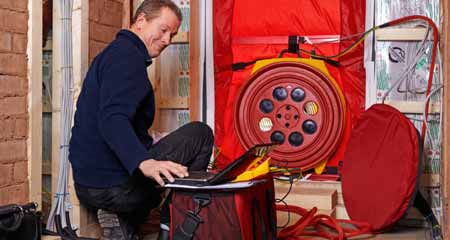Why Do We Need to Do The Blower Door Test?

Well blower door tests are often done by the construction workers in commercial buildings. Sometimes these tests are also done in the construction sites of the residential buildings. There are companies which specializes in these blower door tests which you can hire for your project. With a blower door test you can find out if the room is perfectly airtight or not. Below are some benefits of it:
Airtightness = Moisture Protection

The transport of air humidity (convective humidity transport) through the construction is closely related to the ventilation heat losses. A sufficiently airtight building envelope is essential for the protection of a thermally insulated building structure in particular. The driving forces acting on the air currents are described under “Thermal protection” and also apply to humidity. The effects can be illustrated using damage patterns [9] and the example calculations. If warm, moist air flows through a leak, condensation can form in the cross-section of the component under certain conditions, which in turn leads to damage to the structure, which can lead to structural damage. The potential is almost a factor of 100 greater than that of the diffusion transport mechanism.
Airtightness = Soundproofing
Leaks worsen the sound insulation. Sound can also propagate through joints and holes through which air flows. This is particularly problematic in the case of apartment buildings. A sufficiently (airtight) tight separation of the individual apartments from one another is necessary in order to be able to guarantee the required sound insulation.
Leakage in the area of joints or material pores in masonry construction ruin the sound insulation even with larger areas: A wall made of 240 mm thick pumice hollow block masonry, when unplastered, achieves a weighted sound reduction index of R’w = 16 dB. After applying a thin plaster on both sides, the rated sound reduction index can be significantly improved to R’w = 49 dB [11].

Even in lightweight construction, sufficient airtightness has a significant influence on sound insulation:
Depending on the size and location of the leaks, noise insulation losses due to leaks of up to 10 dB can be measured in the case of metal stud walls compared to the professional implementation.
The sound insulation can be further increased by additionally sealing the open edge connections with partition wall putty: In the case of a single-layer planked metal stud wall (GKB 12.5 mm; CW 100; 80 mm mineral wool insulation), the airtight seal leads to an improvement in the rated sound insulation index Rw of 45 to 47 dB [12].
